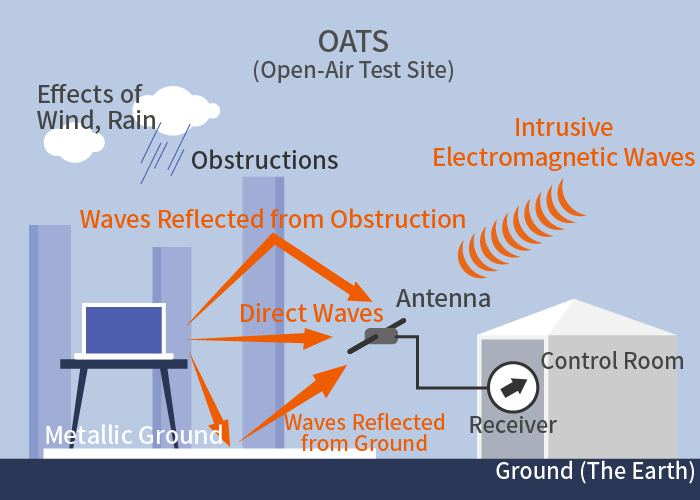Intro to EMC Topics
Components—Part 6: Suppressing Noise with Snap-on Clamp Filters

Electronic devices usually include a range of noise countermeasures by design. Still, the interface cables that connect digital equipment like PCs and peripherals may radiate noise or make the equipment more vulnerable to external noise. Interface cables, which transmit large amounts of data at high speeds, can become the source as well as the entry points of noise. The clamp filter (a ferrite core with a case) is a simple yet stunningly effective way to reduce this type of noise.
Noise problems unique to the era of high-speed, large-capacity networks
High-speed interface cables have made it easy to connect all kinds of digital devices and instantly transfer vast amounts of data, such as video and music.
However, as speed and capacity have increased, so have dropped connections, speed degradations, data transfer errors and similar problems. One known culprit is noise that radiates from interface cables, as well as noise that enters a system through them.
The pulse waves of digital signals are sent out as a dizzying succession of transitions from low to high and from high to low voltages. Just as a speeding car cannot make an abrupt U-turn, a pulse signal’s steep rises and falls inevitably overstep the specified voltages, generating high-frequency components. This creates a waveform disturbance called overshoots and undershoots. Additionally, stray capacitance between an interface cable and ground may create a disturbance called ringing—the distortion and wriggling of square pulse waves—which radiates as noise from the cable.
To protect the system from these noise disturbances, refrain from using arbitrarily long cables, and keep cables away from devices that generate strong noise, such as PCs and displays. If problems persist, first suspect that noise may be entering through interface cables. Don’t underestimate cables: in a networked system, cables are the longest and have the largest surface area of any electronic component.
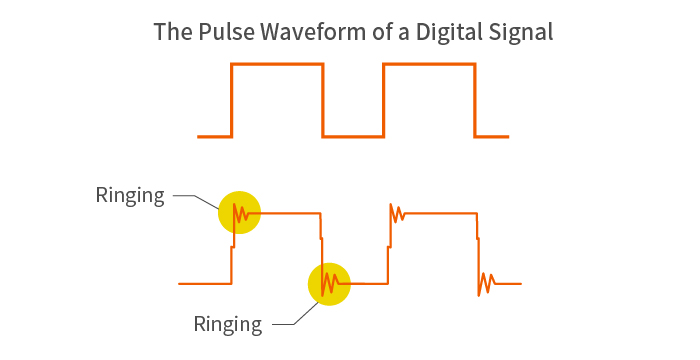
The clamp filter is a simple yet effective noise cleaner
Water leaks or gas leaks from pipes would cause a major upheaval, but leaks of radiated noise are hardly noticed at the onset, as our senses are unable to detect the effects directly. Why do cables, which are separated by open spaces, emit or pick up noise?
Conductors generate radial electric fields and concentric magnetic fields when a current flows through them. This causes electrostatic and electromagnetic coupling between cables, a phenomenon known as crosstalk, which radiates noise outward and also forces noise to be received through the cable acting as an antenna. In other words, cables crawling through a room are pathways for electrical current but also function as antennas that radiate and receive noise. To make matters worse, the higher the frequency, the more pronounced these effects become.
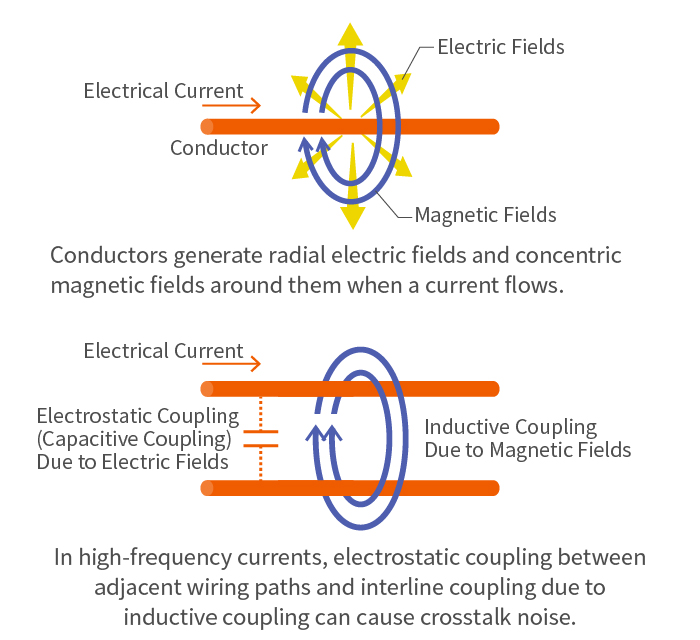
A clamp filter is a simple noise suppression component comprising a cylindrical ferrite core divided lengthwise into two parts and encased in plastic. Cables connecting personal computers and peripheral devices and office equipment like fax machines and copiers are typically fitted with these hump-shaped components. These are clamp filters that are pre-installed when the cables are manufactured.
Because noise can emanate from a plethora of sources depending on the operating environment, an agile response is required. The clamp filter’s key advantage is that it can be installed after a network is built out, without having to disconnect or cut the cables. It is utterly simple to use: just open the case, clamp the cable with it, and snap it closed.
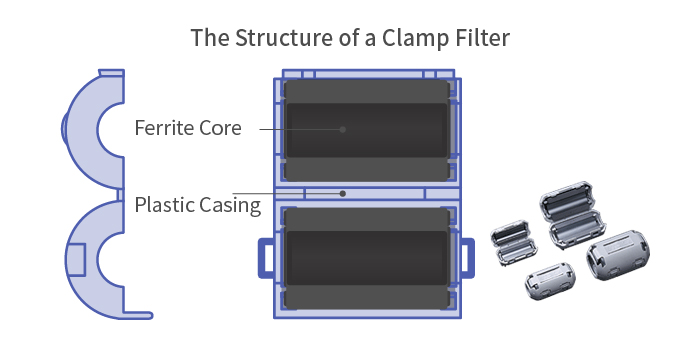
Effective against surge noises like static electricity, too
The clamp filter is a type of common mode noise filter. A current flows through conductors in two ways: differential mode and common mode. Signals are transmitted in differential mode, while most noises—those that radiate from digital equipment as electromagnetic waves or enter through cables acting as antennas—are in common mode.
The clamp filter uses a ferrite core and structurally resembles a large chip bead. The magnetic fields generated concentrically around noises are absorbed and removed as heat as they pass through the ferrite core tunnel. Chip beads, incidentally, use this principle to absorb differential mode noise and remove it as heat.
A clamp filter does not attenuate signals because signals are in differential mode; it only suppresses common mode noise. Compared to the wound wire type of common mode filters, stray capacitance and electromagnetic coupling are negligibly small, which lowers differential mode impedance over a wide frequency range, resulting in almost no effect on signals.
The clamp filter takes full advantage of the unique properties of ferrite, a remarkable magneto-ceramic material. Normally, ferrite does not reveal its magnetic properties, but it immediately awakens and absorbs magnetic fluxes when an external magnetic field is applied. TDK’s clamp filters leverage advanced magnetic material technologies. They utilize optimal ferrite materials that selectively absorb high-frequency noise without distorting signal waveforms, resulting in stable frequency-impedance characteristics of up to approximately 1 GHz. TDK offers a wide series of clamp filter products, including types matching the outer diameters of cables and types held by looping the cable once inside the filter’s case. TDK’s clamp filters are characterized by their sharp responsiveness and wide adaptability to external noises. They are highly effective not only as countermeasures for radiated noise, but for preventing malfunctions caused by static electricity and other surge noises. They are truly invaluable noise suppression tools and powerful enablers of the convenience and comfort of high-speed, large-capacity networks.


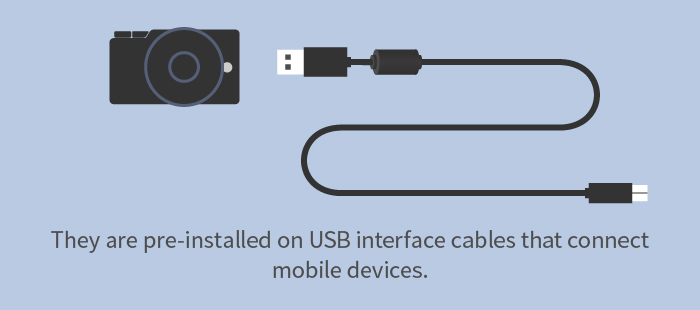
TDK is a comprehensive electronic components manufacturer leading the world in magnetic technology




